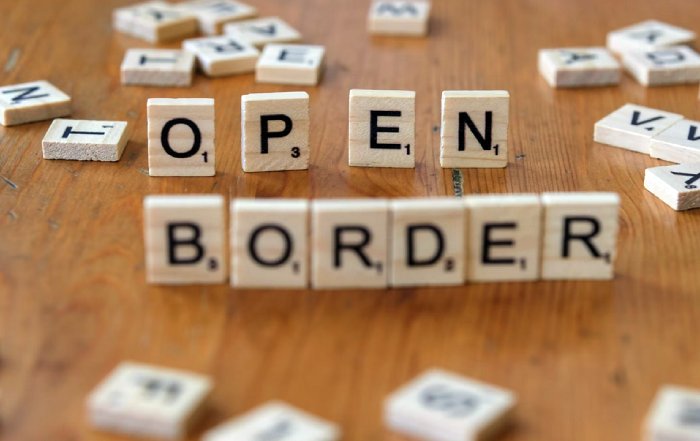The Intersection of Health and Technology Worldwide in 2025
A New Health Landscape Shaped by Technology
In 2025, the relationship between health and technology has moved from a niche interest to a defining force in how individuals, organizations, and governments understand and manage wellbeing across the globe, and WorldsDoor has positioned itself as a lens through which leaders and citizens can interpret this transformation. From remote villages in Africa to innovation hubs in the United States, from national health systems in the United Kingdom and Germany to rapidly digitizing markets in Asia and South America, the convergence of medical science, digital infrastructure, and data-driven decision-making is reshaping expectations about what quality healthcare can and should look like. This intersection is not solely about devices and apps; it is about new models of care, new ethical frameworks, new business opportunities, and new responsibilities that cut across health, technology, society, and the environment.
As policymakers and executives seek to understand how these forces interact, they increasingly look to trusted sources that can translate complex global trends into accessible insight. Through its dedicated sections on health, technology, business, and society, WorldsDoor has become one such platform, connecting developments in clinical research, digital innovation, and social change into a coherent narrative that resonates with readers from North America and Europe to Asia, Africa, and Latin America. The result is a global conversation about health technology that is no longer confined to experts but is increasingly shared by patients, consumers, and communities who recognize that digital health is now part of everyday life.
Digital Health as the New Front Door to Care
The most visible transformation has been the rise of digital health as the primary entry point into healthcare systems worldwide. Telemedicine, once considered an emergency measure during the COVID-19 pandemic, has matured into a permanent pillar of care delivery, supported by robust guidelines from organizations such as the World Health Organization (WHO) and national health authorities. In countries like the United States, Canada, and Australia, virtual consultations have become standard for routine follow-ups, mental health support, and chronic disease management, while in the United Kingdom and parts of Europe, national health systems have integrated telehealth platforms directly into electronic health record systems. Readers who follow global health trends on WorldsDoor's health coverage will recognize how telehealth has shifted from a convenience to an expectation, especially among younger, digitally native populations.
In parallel, mobile health applications are redefining how individuals monitor and manage their own wellbeing. Millions of people now rely on smartphone-based tools for tracking physical activity, sleep, nutrition, and mental health, with leading platforms drawing on guidelines from institutions such as the U.S. National Institutes of Health and the Centers for Disease Control and Prevention to design evidence-based interventions. Learn more about how global public health agencies are shaping digital interventions through resources from the World Health Organization. At the same time, regulatory bodies in Europe, North America, and Asia are working to classify and evaluate certain applications as medical devices, blurring the lines between consumer wellness and clinical care and forcing technology companies to embrace higher standards of safety, privacy, and clinical validation.
Wearables, Sensors, and the Quantified Self
Beyond smartphones and laptops, the proliferation of wearables and connected sensors has ushered in what many commentators describe as the era of the quantified self, in which real-time data about the body is continuously captured, analyzed, and increasingly integrated into clinical decision-making. Devices from global technology leaders such as Apple, Samsung, Garmin, and Fitbit now monitor heart rate, blood oxygen levels, sleep stages, and physical activity, while more advanced wearables can perform electrocardiograms, detect arrhythmias, and even flag early signs of respiratory or metabolic distress. The U.S. Food and Drug Administration (FDA) and its counterparts in Europe and Asia have begun to approve select wearable-based diagnostics, opening the door for clinicians to prescribe devices and for insurers to reimburse their use. For an overview of regulatory developments, readers can explore resources from the FDA's digital health center.
In countries such as Japan, South Korea, and Singapore, where aging populations and high technology adoption intersect, wearables are increasingly used to support eldercare, fall detection, and remote monitoring of chronic conditions, thereby enabling older adults to live independently for longer while remaining under the virtual supervision of healthcare teams. In Europe, particularly in Scandinavia and the Netherlands, connected devices are integrated into home care programs and primary care networks, aligning with broader social policies that emphasize preventive care and community-based services. For readers interested in how these trends intersect with lifestyle and wellbeing, WorldsDoor explores these themes in depth through its lifestyle and innovation sections, highlighting both the promise and the psychological implications of living in a world where personal health metrics are constantly visible.
Artificial Intelligence, Data, and Clinical Decision-Making
Perhaps the most transformative, and controversial, aspect of health technology in 2025 is the integration of artificial intelligence (AI) into diagnosis, prognosis, and treatment planning. AI-driven systems are now assisting radiologists in detecting early-stage cancers, supporting cardiologists in identifying subtle patterns in imaging data, and helping primary care physicians triage patients based on symptom checkers and risk scores. Leading academic medical centers and technology firms collaborate on algorithms trained on millions of medical images and clinical records, with early successes documented in peer-reviewed journals and platforms such as Nature Medicine and The Lancet Digital Health. Those seeking to understand the scientific foundations of AI in healthcare can explore resources from the National Library of Medicine and the European Commission's digital health initiatives.
However, the power of AI is inseparable from the quality, representativeness, and governance of the data on which it is trained. Bias in datasets can translate directly into inequitable outcomes, with underrepresented populations receiving less accurate predictions or recommendations, a concern that has been raised by researchers across the United States, Europe, Africa, and Asia. Organizations such as OECD and World Economic Forum emphasize responsible AI frameworks, calling for transparency, explainability, and inclusive data governance. Learn more about emerging principles of trustworthy AI in health through the World Economic Forum's digital health insights. For WorldsDoor readers, these developments are not abstract; they shape real-world questions about trust, accountability, and the balance between innovation and protection, themes that are explored in the platform's dedicated coverage of ethics and technology.
Global Health Equity and the Digital Divide
Although the narrative around health technology often highlights cutting-edge solutions in wealthy countries, the more consequential story in 2025 concerns whether digital innovation is narrowing or widening health disparities worldwide. In parts of Africa, South Asia, and Latin America, mobile-first health platforms have demonstrated that even basic feature phones can deliver meaningful health interventions, from SMS-based maternal health reminders to remote consultation services that connect rural patients with urban clinicians. Organizations such as Doctors Without Borders (MSF) and Gavi, the Vaccine Alliance have used digital tools to track immunizations, monitor outbreaks, and manage supply chains, offering a glimpse of how technology can amplify the reach of scarce human resources. Readers interested in how digital tools support public health campaigns can explore overviews from Gavi and UNICEF's innovation office.
At the same time, the digital divide remains a formidable barrier. Reliable internet access, affordable devices, and digital literacy are unevenly distributed across and within countries, including within advanced economies such as the United States, United Kingdom, Germany, and Canada, where rural and low-income communities may still struggle to access telehealth or digital records. The World Bank and International Telecommunication Union (ITU) have repeatedly highlighted that connectivity gaps translate directly into health inequities, as those without access to digital services are less able to benefit from new models of care. Learn more about how connectivity and health outcomes intersect through analyses from the World Bank and ITU. For WorldsDoor, which speaks to a global readership, this tension between opportunity and exclusion is central to its coverage of world and society, underscoring that technology cannot be considered neutral when its benefits are unevenly distributed.
Business Models, Investment, and the Health-Tech Ecosystem
The intersection of health and technology has also become one of the most dynamic arenas for investment and entrepreneurship, with startups, incumbents, and investors competing to define the future of care. Venture capital continues to flow into digital therapeutics, telehealth platforms, AI-driven diagnostics, and health data infrastructure, especially in markets such as the United States, Europe, and parts of Asia including Singapore, South Korea, and Japan. Global consulting firms like McKinsey & Company, Deloitte, and PwC regularly publish analyses on the size and trajectory of the digital health market, while financial media such as Bloomberg and Financial Times track major mergers, acquisitions, and public offerings that signal consolidation and maturation within the sector. Learn more about evolving health-tech business models through insights from McKinsey's healthcare practice and Deloitte's life sciences and healthcare reports.
However, monetizing health technology raises complex questions about incentives and alignment. When revenue depends on engagement, there is a risk that platforms prioritize usage over outcomes, potentially encouraging overdiagnosis, unnecessary testing, or anxiety-inducing self-monitoring. Insurers and employers in North America and Europe increasingly demand evidence that digital interventions deliver measurable improvements in health and reductions in cost, leading to greater emphasis on clinical trials, real-world evidence, and outcomes-based pricing models. For executives and policymakers following WorldsDoor's business coverage on business and innovation, these developments highlight the need to balance financial sustainability with ethical responsibility, ensuring that the pursuit of shareholder value does not undermine patient trust or public health goals.
Regulation, Privacy, and the Ethics of Health Data
As health and technology converge, data has become both an invaluable asset and a source of profound ethical concern. Electronic health records, genomic databases, wearable-derived metrics, and social determinants of health data are increasingly aggregated and analyzed to generate insights, but they also create unprecedented opportunities for misuse, discrimination, and surveillance. Regulatory frameworks such as HIPAA in the United States and GDPR in Europe provide partial protection, yet the rapid evolution of digital health tools continually tests the boundaries of existing laws. Governments in Canada, Australia, Singapore, and other advanced economies are updating privacy and cybersecurity regulations to address health-specific risks, often drawing on guidance from organizations such as the OECD and Council of Europe. Readers can explore broader perspectives on data protection and health through the European Data Protection Board and OECD's health data governance work.
Ethical debates extend beyond privacy to questions of consent, ownership, and benefit sharing. When patients contribute data to research platforms or commercial services, it is not always clear who ultimately profits from the resulting insights, especially in the case of genomic or population-level datasets that can underpin highly lucrative therapies or algorithms. Civil society organizations, academic ethicists, and patient advocacy groups argue for models in which communities share in the value generated from their data, and in which consent is genuinely informed and ongoing rather than buried in opaque terms of service. WorldsDoor, through its coverage on ethics and education, emphasizes the importance of digital health literacy, enabling individuals to understand not only how to use tools but also how their information flows through complex ecosystems of providers, payers, and technology firms.
Sustainability, Environment, and the Hidden Footprint of Digital Health
The environmental implications of digital health are often overlooked in mainstream discussions, yet they are increasingly relevant in a world grappling with climate change, resource constraints, and the need for sustainable development. On one hand, telehealth, remote monitoring, and digital collaboration can reduce the carbon footprint associated with patient and clinician travel, physical infrastructure, and paper-based records, aligning with broader sustainability goals in Europe, North America, and Asia-Pacific. On the other hand, the data centers, networks, and devices that underpin digital health consume significant energy and generate electronic waste, raising concerns about long-term environmental impact. Organizations such as UN Environment Programme (UNEP) and Greenpeace have called attention to the ecological cost of the digital economy, including health-related technologies. Learn more about the environmental footprint of digital systems through resources from UNEP and International Energy Agency.
For WorldsDoor, which maintains dedicated coverage on environment and sustainable futures, the intersection of health technology and sustainability is a critical theme, particularly for readers in regions such as the European Union, Scandinavia, and New Zealand where environmental accountability is a core public value. Health systems in countries like the United Kingdom, France, and the Netherlands are beginning to integrate sustainability metrics into digital transformation strategies, evaluating not only clinical and financial outcomes but also emissions, energy efficiency, and lifecycle impacts of devices. This multidimensional approach reflects a broader shift toward viewing health as inseparable from environmental and social systems, and it challenges technology providers to design solutions that are not only innovative but also responsible in their use of planetary resources.
Culture, Society, and the Human Experience of Digital Health
Beyond infrastructure and policy, the adoption and impact of health technology are profoundly shaped by cultural attitudes, social norms, and individual psychology. In some societies, particularly in parts of Asia and Northern Europe, there is a strong cultural embrace of data-driven self-improvement, making wearable devices and health apps a natural extension of existing habits around fitness, nutrition, and preventive care. In others, including segments of the population in the United States, United Kingdom, and South Africa, skepticism toward institutions and concerns about surveillance can dampen enthusiasm for digital tools, especially when they are associated with employers, insurers, or governments. Anthropologists, sociologists, and behavioral scientists are increasingly involved in digital health design, recognizing that technology must adapt to human contexts rather than expecting the reverse. For those interested in the cultural dimensions of health technology, WorldsDoor explores these dynamics through its culture and world sections, highlighting stories from Italy, Spain, Brazil, Thailand, and beyond.
The relationship between digital health and food, travel, and lifestyle is another emerging frontier. Nutrition-tracking apps, digital coaching programs, and AI-driven recipe recommendations influence how individuals in France, Italy, Japan, and the United States make daily food choices, while travel health applications provide real-time information on vaccinations, outbreaks, and local medical resources for international travelers moving between Europe, Asia, Africa, and the Americas. Learn more about the evolving connections between health, lifestyle, and food choices through WorldsDoor's food and lifestyle coverage. In cities such as Singapore, Amsterdam, and Vancouver, urban planners and public health officials collaborate with technology firms to develop "smart healthy cities" that integrate environmental sensors, mobility data, and public health information into platforms designed to promote active living, reduce pollution exposure, and improve mental wellbeing. These initiatives underscore that the intersection of health and technology is not confined to clinical settings but permeates the spaces where people live, work, and move.
Education, Skills, and the Future Health Workforce
As digital tools become integral to care, the competencies required of health professionals are evolving rapidly, with implications for education systems in North America, Europe, Asia, and beyond. Medical schools and nursing programs in countries such as Germany, Canada, Australia, and the Netherlands are integrating training in data literacy, AI interpretation, telemedicine communication, and cybersecurity into their curricula, recognizing that future clinicians must be comfortable working alongside algorithms and digital platforms. Professional bodies and organizations such as the World Medical Association and International Council of Nurses emphasize continuous learning, encouraging practitioners to update their skills as technologies change. Readers can explore broader trends in health workforce development through resources from the World Health Organization's human resources for health and global education initiatives from UNESCO.
Digital health also creates new roles that bridge traditional boundaries between medicine, engineering, design, and social science, including clinical informaticians, digital health product managers, patient experience designers, and health data ethicists. For students and professionals exploring career transitions, understanding these hybrid opportunities is essential, and WorldsDoor supports this exploration through its education and technology sections, which highlight how universities, bootcamps, and professional organizations in the United States, United Kingdom, Singapore, and elsewhere are responding. At the same time, there is a growing recognition that digital tools should augment rather than replace the human aspects of care, preserving empathy, judgment, and relational trust at the core of the health professions.
WorldsDoor's Role in Navigating a Connected Health Future
As the intersection of health and technology becomes more complex, the need for trusted, integrative perspectives grows. WorldsDoor has emerged as a platform that brings together diverse strands of this global story, connecting developments in clinical innovation, regulatory policy, business strategy, cultural change, and environmental sustainability for a worldwide audience that spans the United States, United Kingdom, Germany, Canada, Australia, France, Italy, Spain, Netherlands, Switzerland, China, Sweden, Norway, Singapore, Denmark, South Korea, Japan, Thailand, Finland, South Africa, Brazil, Malaysia, New Zealand, and beyond. By organizing coverage across interconnected domains such as health, travel, culture, business, environment, and innovation, it reflects the reality that digital health is not a siloed topic but a thread running through modern life.
For business leaders, policymakers, clinicians, educators, and engaged citizens, understanding the global dynamics of health technology is no longer optional; it is a prerequisite for making informed decisions about investment, regulation, workforce development, and personal wellbeing. As 2025 unfolds, the choices societies make about how to design, deploy, and govern digital health tools will shape not only clinical outcomes but also values around equity, privacy, sustainability, and human dignity. In documenting these choices and their consequences, WorldsDoor aims to provide not just information but orientation, helping its readers see how their own experiences fit within a broader global narrative. Those who wish to follow this evolving story can explore the full range of perspectives and in-depth features at WorldsDoor's homepage, where the intersection of health and technology is viewed not as a distant abstraction but as a lived reality, opening new doors to understanding, opportunity, and responsibility worldwide.










